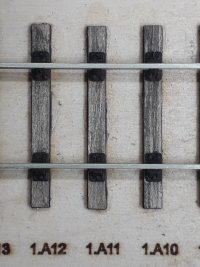Hello James,
Another very good video but then again you seem to be able to turn them out when covering most subjects. How do you see the cost breakdown of making laser cutters ? As with many devices the selling price is often set at a level that the market will stand in the initial stages of production. When sales have reached a certain level and the development costs have been recouped prices often drop a bit. Is the laser head the main expense for a company selling these ?
Have you found the secret to getting realistic corner joins on laser cut brick walls ? Usually do-able if you have stones covering the corner but on brick to brick joins not too easy. Unless you have a plan.....? It will be interesting to see your methods on painting brick structures too.
Rob
Hi Rob, very interesting post,
re the cost of lasers, well more accurately diode lasers, its true there has been a direct cost to performance relationship, partly because as the manufacture moved from a single diode laser device (typically 5.5w output power) to the next generation which is, at as I understand it really two 5.5W lasers working though a light prism to create a single combined powered 10~11W beam. In fact its not a dissimilar set up to a Co2 laser in so far as the laser beam is manipulated through reflectors to get the final beam in the location there after. The reason I mentioned this will become more clear latter.
The next iteration was to take the same idea and double it again IE 4 x 5.5 W giving you an output of 22W (the same as the Creality James reviewed) There are already 30 W ( 6 x 5.5) and 40W (8 x 5.5) on the market.
There are two downside to this idea of just stacking up a series of 5.5w diode lasers, these are, as the power goes up so does the beam width meaning the kerf gets bigger (not ideal for 4mm and below modelling) the other thing that is happening and its something I only just realised the hard way yesterday, is the weight of the laser is also going up quite noticeably.
This could well start to create an issues which is currently not that obvious, in that as the weight goes up, so does the inertial force being applied to the frame of the machine and its servo sizing, which ultimately will result in frame flex or over travel and over burn ( something I have been experiencing on my system with 4mm brick work in the perps direction) (that's short for perpendicular and credit should go to James for explaining this to me.)
Creality have also produced a 40W laser which interestingly can be switch back down to 20 W for what there calling precision work. If James does get to do a review of this 40W laser. I for one would be very keen to see if firstly there is much added weight on the 40W device and secondly if the extra inertial force is notable on the the finished product, the perps of 4mm bricks being what looks to be a good test case.
This is something the co2 laser avoids because the only thing the head is moving is the final reflector so the weight of the actual co2 lasers is not relevant in this case.
The net result of all of this is, for a diode laser there has to ultimately be a power to weight ratio in terms of laser accuracy, my gut feeling is its at about 22W. Whilst the there is no doubt more powerful machines will be developed for people wanting to burn through thicker wood than say 12 mm or the people wishing to cut though steel or stainless steel. That will be an much smaller target market. I strongly suspect the days of next generation power, driving the previous generation cost down are coming to an end. Maybe not quite yet but a settling of price point will eventually happen.
To your point about the corners of bricks, if designed correctly there should be no reason you cant create a tongue and grove corner joint effect with the bricks, a bit like the old Linka system if you remember that. That would mean quite a bit of cleaning the exposed brick edges and would mean the total thickness of your material would have to equal the width of a brick header.
As for painting James has already done a very good video on painting and then getting a good mortar representation for laser cut MDF brick work.
Like many things the more effort you put into creating natural random toning of the individual bricks the better the overall effect. Something printed brick paper does very well to be honest, where brick paper falls down is getting a true feeling of depth.
Cheers
Phil
 Search
Search

